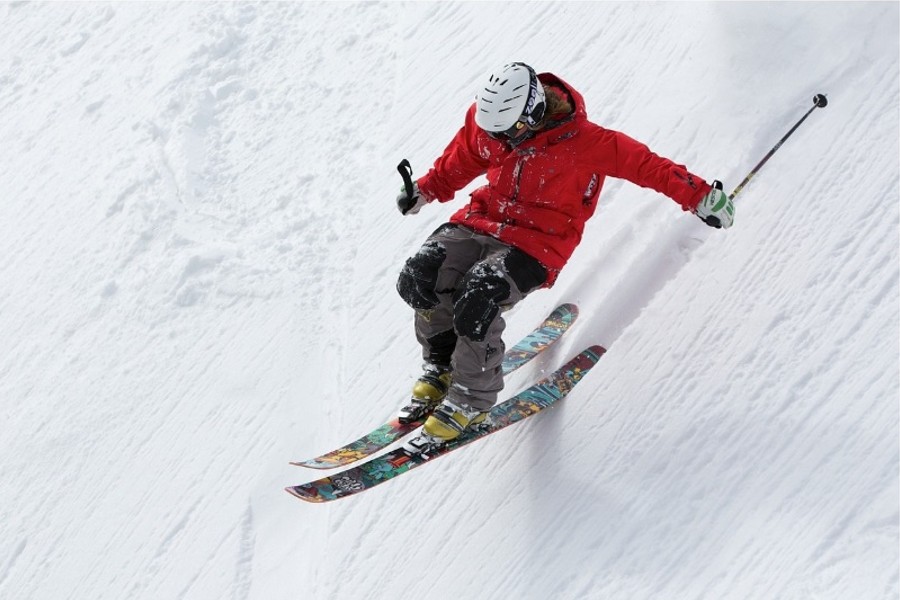
Picture this: You’re perched at the top of a pristine mountain, ready to conquer the exhilarating slopes, with the world of winter wonder stretched out before you.
The excitement is palpable, and the adrenaline is pumping. But, as any seasoned skier knows, there’s a formidable foe lurking in the midst of this icy adventure – extreme cold. When the mercury drops and the wind chill bites, staying warm becomes a critical part of your skiing experience. Fear not, for we’ve got you covered. In this blog post, we’ll unveil eight essential tips to keep you toasty and comfortable while skiing in the harshest of winter conditions. Without further ado, let’s get started.
Choose the Right Ski Gear for Cold Weather
Choosing the right ski gear for cold weather is paramount to ensuring a comfortable and enjoyable skiing experience. Opt for insulated, waterproof, and windproof outerwear to create a thermal barrier against frigid temperatures and biting winds. As highlighted by the team behind Slope Hacker, you can read reviews from experts to make informed decisions about which ski gear will best suit your needs and preferences.
Additionally, it’s crucial to invest in high-quality thermal layers, moisture-wicking base layers, and warm accessories like gloves, hats, and neck gaiters to maintain optimal body temperature while on the slopes.
Don’t forget about your extremities; invest in insulated gloves or mittens, a warm and moisture-wicking hat, and ski-specific goggles to protect your face from windburn and snow glare. Additionally, make sure your ski boots have adequate insulation and opt for thermal socks to keep your feet warm.
Adopt Layering Strategies for Maximum Insulation
To stay warm while skiing in extreme cold, adopting layering strategies for maximum insulation is essential. Start with a moisture-wicking base layer to keep sweat away from your skin and maintain dryness. Over this, add an insulating layer, such as fleece or down, to trap heat close to your body. A breathable and waterproof outer layer, like a ski jacket and pants, acts as a shield against the elements.
This layering system allows you to regulate your body temperature by adding or removing layers as needed. Don’t forget to include a neck gaiter or balaclava to protect your neck and face, completing your insulation strategy for ultimate cold-weather comfort.
Get Cold-Weather Accessories
When skiing in extreme cold, equipping yourself with the right cold-weather accessories is essential for comfort and safety. Start with a high-quality pair of insulated gloves or mittens to protect your hands from freezing temperatures. A warm, moisture-wicking hat or helmet liner keeps your head cozy and reduces heat loss.
Ski-specific goggles with anti-fog coatings shield your eyes from snow, wind, and glare, enhancing visibility. Don’t forget to wear a neck gaiter or balaclava to guard your neck and face against the biting cold. Finally, invest in warm, moisture-wicking socks and consider hand and foot warmers for extra heat when facing the most frigid conditions on the slopes.
Wear Insulated Ski Boots and Socks
Wearing insulated ski boots and socks is crucial for maintaining warmth and comfort while skiing in extreme cold. Insulated ski boots are designed to provide thermal protection by preventing cold air from penetrating the interior. Look for boots with proper insulation and a snug fit to keep your feet warm.
Pair these boots with thick, moisture-wicking ski socks made from materials like merino wool to provide additional insulation while keeping sweat at bay. Avoid cotton socks, as they retain moisture and can lead to cold feet. Properly insulated boots and socks ensure that your feet stay cozy and allow you to focus on enjoying the slopes without the distraction of cold extremities.
Fuel Your Body for Cold Skiing
Fueling your body appropriately is essential when skiing in extreme cold conditions. In cold weather, your body burns more calories to stay warm, so it’s crucial to consume energy-rich foods and stay hydrated. Start your day with a hearty breakfast that includes complex carbohydrates and protein to provide sustained energy. Carry high-energy snacks like trail mix or energy bars to replenish your energy levels throughout the day.
Staying hydrated is equally important, so drink fluids regularly, even if you don’t feel thirsty. Warm beverages like tea or hot cocoa can help keep you warm and hydrated. Proper nutrition and hydration are key to maintaining energy and warmth while skiing in cold weather.
Active Warm-Up Exercises Before Hitting the Slopes
Engaging in active warm-up exercises before hitting the slopes is crucial for preparing your body to endure extreme cold while skiing. Cold temperatures can stiffen muscles and reduce flexibility, increasing the risk of injury. Incorporate dynamic stretches like leg swings, arm circles, and torso twists to increase blood flow and loosen up your muscles. Perform a few sets of squats or lunges to activate leg muscles and enhance stability.
Additionally, a short cardio session, like jumping jacks or a brisk walk, can raise your core body temperature. These warm-up exercises not only improve performance but also help your body adapt more comfortably to the cold environment, ensuring a safer and more enjoyable skiing experience.
Stay Dry
Staying dry is a critical factor in staying warm while skiing in extreme cold. Wet clothing can quickly sap your body of heat, leading to discomfort and potentially dangerous conditions like hypothermia. Invest in high-quality, waterproof outerwear such as ski jackets and pants to keep moisture out. Ensure that your gear has sealed seams and waterproof zippers to prevent any leaks.
Additionally, make use of moisture-wicking base layers to move sweat away from your skin and maintain dryness. Carry extra clothing layers in a waterproof bag in case of unexpected weather changes. By prioritizing dryness, you can maintain your body’s warmth and enjoy your skiing adventure in the coldest conditions.
Monitor Weather Conditions
Monitoring weather conditions is a crucial aspect of staying safe and comfortable while skiing in extreme cold. Before heading to the slopes, check the weather forecast for temperature, wind speed, and potential storms. Pay attention to wind chill factors, as they can significantly affect how cold it feels on the mountain.
While skiing, be vigilant about changing weather patterns, especially in alpine environments where conditions can shift rapidly. Carry a weatherproof map, GPS device, or smartphone with reliable signal for navigation and emergency communication. Knowing when to take breaks or seek shelter in severe weather is vital for your well-being while skiing in extreme cold.
Skiing in extreme cold can be an exhilarating adventure, but it requires careful preparation and attention to detail to stay warm and safe. By following these essential tips, including layering effectively, choosing the right gear, staying dry, and monitoring weather conditions, you can enjoy the slopes even in the most frigid temperatures. Remember to prioritize your safety and comfort by fueling your body, performing warm-up exercises, and ensuring your clothing and equipment are up to the task. With the right strategies in place, you can make the most of your cold-weather skiing experience.
- NYC Health Department Releases 2023 Annual Report On Hepatitis A, B, C
- Mount Sinai Launches AI Center To Transform Healthcare And Advance Innovation (Video)
- Mayor Adams Announces Progress on Efficient Building As Governor Hochul Signs Law
- Understanding Commercial Driving Licenses And How To Obtain One
- A Comprehensive Guide To Special Needs Life Care Planning
Become a Harlem Insider!
By submitting this form, you are consenting to receive marketing emails from: . You can revoke your consent to receive emails at any time by using the SafeUnsubscribe® link, found at the bottom of every email. Emails are serviced by Constant Contact









